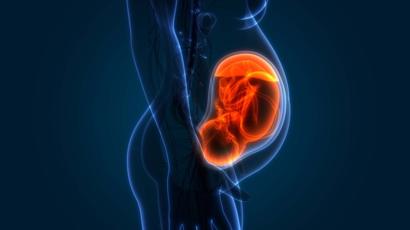Japanese Researchers Identify Placental Protein SNAT4 That is Critical To Healthy Fetal Development
Source : Thailand Medical News Dec 28, 2019 5 years, 10 months, 5 days, 22 hours, 8 minutes ago
Japanese researchers from Riken BioResource Research Center have identified a
protein that transports essential amino acids across the
placenta and its critical contribution to normal
embryonic development in mammals.

Typically, the
placenta provides a supportive environment for developing mammalian
fetuses. One of its most important roles is to supply nutrients, including amino acids, from the mother. But the molecular mechanisms behind the supply of amino acids were not well understood until the results from this research.
A team led by Dr Atsuo Ogura of the RIKEN BioResource Research Center has conducted a genetic study that explores the roles amino-acid transporters in the
placenta play in development. Their major interest is cloning mammalian cells known as somatic cell nuclear transfer (SCNT), which offers tremendous potential for producing livestock with useful genetic traits, generating animal models for disease, and reproductive medicine.
Dr Shogo Matoba, a senior research scientist in Ogura's lab told
Thailand Medical News via a phone interview, "SCNT-generated embryos frequently show various developmental abnormalities, including an abnormally large placenta. Only 1–5 percent of SCNT-cloned mouse embryos develop to term. In our research as to what was causing this, we came across that there was a deficiency of the
placental protein SNAT4."
A detailed dragnet search for abnormally regulated genes in the
placentas of these cloned embryos led the researchers to
small neutral amino-acid transporter 4 (
SNAT4), which belongs to a larger family of proteins that facilitate the delivery of a variety of amino acids. Ogura and Matoba made a series of
genetic manipulations to better understand this protein's importance in early development of mouse embryos.
Upon confirming that
SNAT4 is specifically expressed in the healthy
placenta, the researchers used the
CRISPR–Cas9 gene-editing technology to generate mouse embryos that were deficient in
SNAT4. The resulting pups were severely underweight, and only 28 percent were alive two weeks after delivery.
The medical and genomic researchers then bred
SNAT-4-deficient males with normal females, and found that the resulting pregnancies still yielded severely underweight embryos with equally underdeveloped
placentas. These changes were associated with reduced amino-acid levels in the circulation of fetal mice, hinting at a likely cause for this impaired development.
Since
SNAT4 is strikingly overexpressed in SCNT-generated embryos, this could potentially explain the abnormally large
placentas observed in this context.
These study results also have implications f
or normal human reproduction. "The
SNAT4-knockout mice showed phenotypes similar to those seen in intrauterine growth retardation," says Matoba, referring to a developmental abnormality that can potentially lead to miscarriage. "These animals could be a valuable model for studying the mechanisms of this phenomenon in mammals including humans."
Dr Matoba intends to investigate further how amino-acid transporters shape normal
fetal development by knocking out other SNAT-encoding genes alongside
SNAT4. He also wants to explore
SNAT4's function in non-placental tissues such as the liver.
Reference : Shogo Matoba et al. Paternal knockout of Slc38a4/SNAT4 causes placental hypoplasia associated with intrauterine growth restriction in mice, Proceedings of the National Academy of Sciences (2019). DOI: 10.1073/pnas.1907884116
